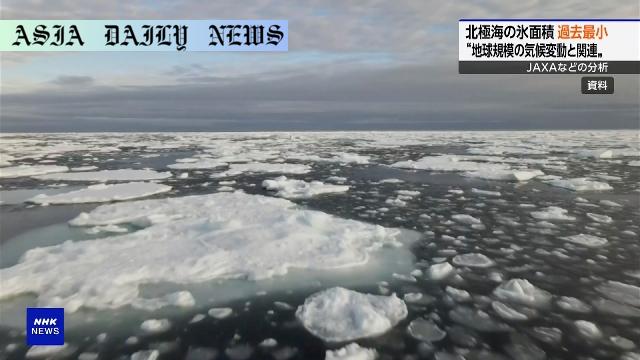Arctic Ice: Japan’s space agency reports smallest Arctic ice extent recorded in over three decades, raising climate change concerns.
Arctic Ice extent in 2025 marked the smallest ever recorded since 1979.
Ocean temperatures impacted ice growth, influenced by climate change.
JAXA and National research teams monitored data with the Shizuku satellite.

Arctic Ice Extent Reaches Record-Low in 2025
The Arctic ice extent in 2025 has alarmed scientists across the globe as it reached its smallest size on record, marking another sign of the escalating impact of climate change. Japan’s Aerospace Exploration Agency (JAXA), in collaboration with the National Institute of Polar Research, revealed the measurements in a recent news briefing. Using the Shizuku satellite, their findings conclude the maximum ice coverage at just 13.79 million square kilometers on March 20, which is roughly 130,000 square kilometers smaller than the previous minimum figure recorded in 2017.
Since 1979, Arctic ice monitoring has provided critical insights into how seasonal changes and global warming are reshaping our planet. The ice regularly grows between October and March due to plummeting temperatures during Arctic winters. However, 2024’s winter revealed signs of drastic changes, with each monthly average of ice area between December 2024 and February 2025 being the smallest recorded in history. These findings paint a concerning picture of diminishing Arctic ice and its associated consequences on ecosystems, weather, and humanity.
Impact of Ocean Temperature on Ice Decline
One of the significant factors contributing to the decline in Arctic ice has been higher-than-average ocean temperatures. Warmer seas hinder the formation and maintenance of ice, especially in critical times when the Arctic ice sheet typically regenerates. Scientists from JAXA explained how rising global temperatures and warming seas in recent years have minimized the natural growth cycle of Arctic ice. This thawing trend holds severe implications for the Arctic region and beyond.
Melting Arctic ice alters ocean circulation patterns, often causing disruptive weather events further away. These changes affect marine biodiversity by uprooting ecosystems dependent on ice formations. Moreover, these transformations accelerate sea-level rise, posing risks for coastal cities around the world. It is no exaggeration to say that the Arctic’s plight has far-reaching impacts that extend to every corner of the globe, demanding immediate attention and action.
Monitoring and Responsibility: JAXA’s Continued Efforts
JAXA President Yamakawa Hiroshi emphasized the importance of ongoing research to comprehend and respond to the challenges posed by a shrinking Arctic ice extent. During a press conference, Hiroshi stressed that this sharp decline directly correlates with the escalating global climate crisis. Under Hiroshi’s leadership, JAXA is committed to leveraging advanced satellite technology, such as Shizuku, to provide accurate data on Arctic changes and their implications.
JAXA’s meticulous monitoring helps illustrate the broader environmental story within the Arctic—a tale of warming oceans, vanishing icebergs, and endangered marine species. As governments prepare for global climate summits, this type of research underscores the urgency of implementing sustainable policies that curb CO2 emissions and limit global warming. Such coordinated efforts could provide some measure of hope for stabilizing Arctic conditions in the future.



Commentary
The Implications of Shrinking Arctic Ice
The record-breaking decline in Arctic ice extent, as highlighted in the 2025 observations, should serve as an undeniable wake-up call for humanity. This is not just a remote environmental issue—it directly impacts global weather systems, biodiversity, and human livelihoods. The Arctic’s gradual transformation mirrors the broader reality we face in addressing climate change.
Warming Oceans: A Silent Force Behind Arctic Decline
Many readers might wonder how higher ocean temperatures influence polar climates, but the connection is clear. Water absorbs much of the sun’s heat, particularly as reduced ice cover decreases its reflective abilities (a phenomenon known as the albedo effect). Warmer water, in turn, delays the freezing of ice and accelerates existing ice melting. This compounded effect not only speeds up the ice loss but also highlights the vicious cycle underpinning climate change.
What Can Be Done to Reverse the Trend?
As alarming as the data may be, solutions do exist. International efforts to lower carbon footprints, transition to renewable energy sources, and implement sustainable development goals remain pivotal in ensuring that Arctic decay is slowed or even partially reversed. Public awareness and governmental response must go hand in hand in tackling this crisis. It’s crucial that reports like this do not merely evoke concern but inspire actionable change.
Ultimately, while the record low Arctic ice in 2025 symbolizes one of the most visible manifestations of climate change, it also represents an opportunity—an urgent call to act, unite, and rethink how we coexist with the environment.